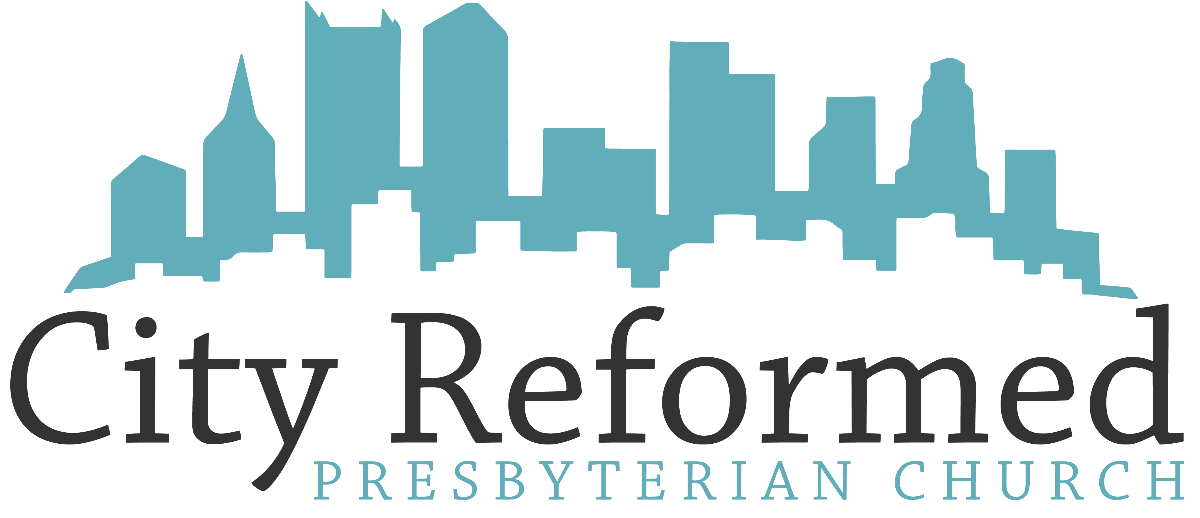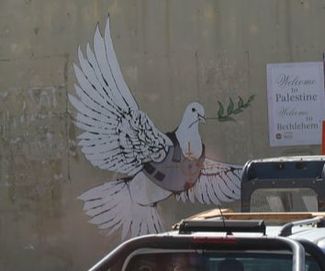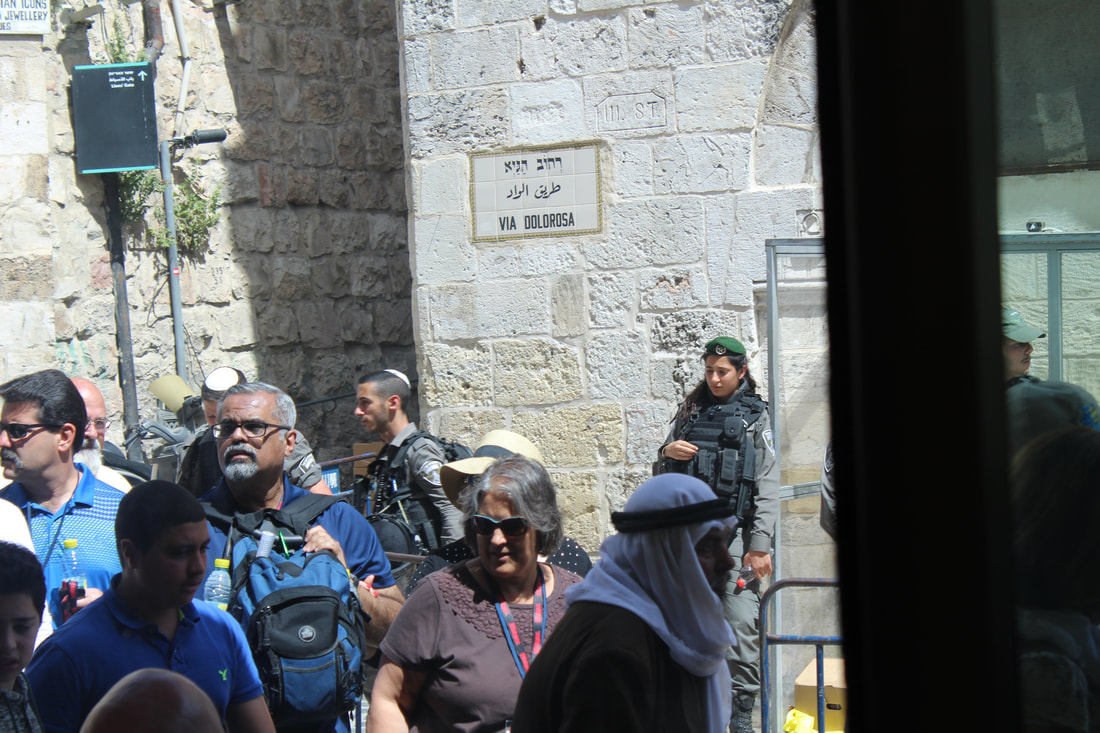My former post was about diversity among Christians, but that is only part of the story. Jerusalem is a 5,000 year old city and it contains layer upon layer of religious expression. Today it is still a very important religious city for the worlds three largest monotheistic religions. Jews, Christians and Muslims consider it to be a place of great importance. The Old City of Jerusalem is divided into sections of Jews, Muslims and Christians – all of whom trace their lineage back for hundreds of years in the city. Currently, the city is under Jewish control, but that has only been the case since the 6 Days War in 1967. In the tentative balance of Middle Easter politics, the local people navigate the delicate relationships which characterize their daily life.
At the Western Wall, the Muslim call to prayer, the Christian church bells and the groaning prayers of the Jewish people rise together into the air of this contested city.
First a quick review. On Wednesday we saw Masada and En Gedi as we made our way to Jerusalem. Upon entry we went to the City of David and sloshed through Hezekiah’s Tunnel. Yesterday we started at the Western Wall, viewed the excavations under the city, then crossed the border into Palestinian controlled Bethlehem. We returned to see the traditional locations of Caiaphas’s house and the upper room. Today we did a walking tour of Jerusalem, starting with the Mount of Olives, into Jerusalem and the pool of Bethsaida and then along several stops of the historic Via Dolorosa, all the way to the Church of the Holy Sepulcher. We then concluded with a tour of the Garden Tomb and walked back to the hotel.
A couple of stories from this time demonstrates the tense nature of inter-religious balance.
On Thursday we closed our day today with a visit to an old site that commemorates the last supper. It is highly doubtful that this marks the actual location of the last supper, but the building has been venerated for that purpose since at least the time of the crusaders and maybe before. Almost unbelievably, it is located on top of what the Jewish people recognize as the tomb of King David. The small building which contains the purported sarcophagus of David is filled with praying rabbis and is considered to be the second holiest Jewish site in the city. During the time of Turkish rule, the hostilities surrounding the use of this location created enough tension that the local Muslim ruler attempted to solve the problem by turning the building into a Mosque. That was not a great plan. After the city returned to Jewish control in 1967, you can imagine the problems that ensued. One location is considered a significantly important holy site by three religions. As we entered, our tour guide warned us: “The rules are very strict here. You cannot pray out loud, you cannot sing. You must be careful. We do not want to start a fight.”
On Friday I was struck by a vivid picture of these converging and conflicting religious streams. The Via Dolorosa is the supposed route that Jesus took as he endured suffering and rejection on the way to the cross. Some of the sites reflect Biblical stories and some are extra-biblical. Given that the city was so often destroyed and rebuilt, it is hard to know with any certainty where particular things were located. It is also interesting that the route progresses through the Muslim quarter of the city. The street vendors and narrow corridors make the route feel both foreign and ancient.
We ate lunch on a corner where the Via Dolorosa turned onto a larger thoroughfare. The corner had one of many outposts of soldiers with the Israeli Defense Force. Military service is mandatory for all citizens (male and female) and many of the soldiers are in the late teens and early twenties. The larger street (by Old City Jerusalem standards) in front of our café was a major passageway for Muslim worshippers to access the Mosque on the Temple Mount.
At the beginning of our lunch the call to prayer echoed through the streets as Muslims streamed down to the mosque. Throughout the meal, Christian pilgrims continued to pour down the Via Dolorosa. Eastern European women with their heads covered in scarves, and priests in long flowing black robes trekked in the ancient pathway of Jesus. During the meal, several young Palestinian men were pulled from the street, questioned and searched. A reminder of the continued police presence in this conflicted land.
At the end of the meal, the flow of Muslim worshippers reversed course and moved backward, away from the Mosque. Now the two streams were moving in opposition. In front of our tables, the throngs of Christian pilgrims jostled with Muslim worshippers, under the watchful eye of the Israeli police. Distinct clothing marked the contrast in these great monotheistic religions. M-16’s and police baracades were a reminder of the ongoing hostilities. It was a picture of the conflict and the struggle to coexist in this ancient land.


